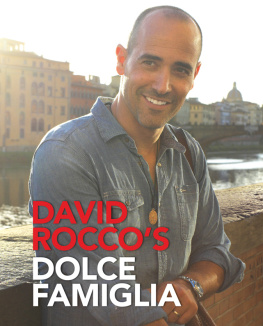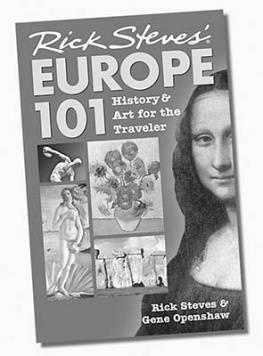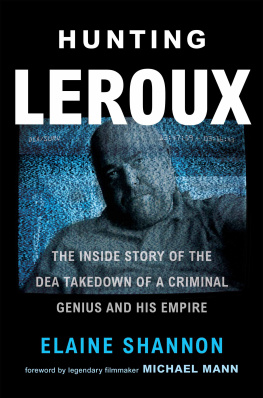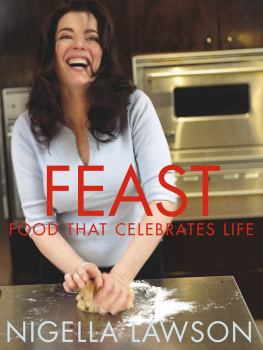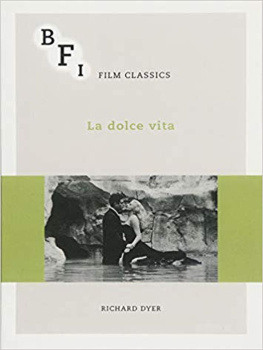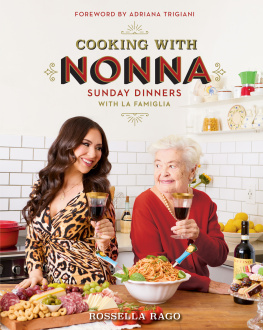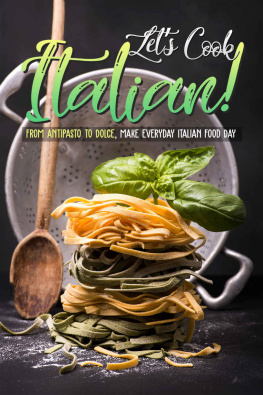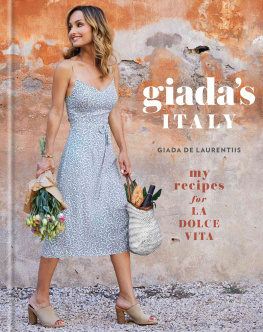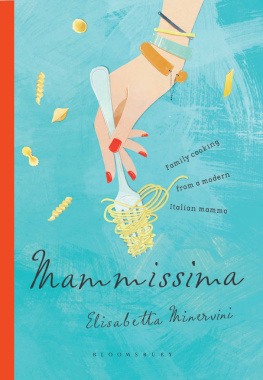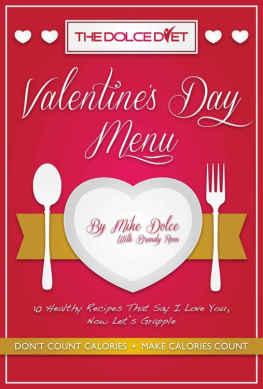

To Josie and Mimmo, my mom and dad.
Thank you for all your love and unconditional
support. You showed me the power of food, and
how cooking and eating together bring people
and families closer. Love you both!

CONTENTS
Guide


Italians are famous for family gatherings. Around the world, it seems we all head over to Mammas or Nonnas for Sunday pranzo, which is generally a feast of family favorite comfort foods. Its not that Italian families are better at getting along with each other than anyone else, but that the ritual of breaking bread together runs deep in the Italian psyche. And its kind of genius, I think, because few things are as pleasurable as sharing a meal.
Making a mealno matter how humblesitting together around the table, taking time to enjoy the way the food looks and smells, and appreciating that someone put their time into making it can make you feel happier and more connected to each other, and to life.
Now, what I consider family doesnt always match the traditional definition. Because of distance some of us are far from our blood relatives, so we create our families where we live. After all, a family isnt just DNA. Its also a feeling. Is a group of friends who get together every so often to have a meal any less a family?
In my travels Ive met many people who over the years have forged relationships as deep as any family. Im thinking about the co-op group of fishermen I met in Orbetello, Italy, who eat together every day. To me, thats family. When Im on the road shooting a show, my crew and I are like family. We end our day by sitting at the table and breaking bread together, at times talking through our differences.
So, this is the spirit Im trying to capture in this book. Its about recipes that come from tradition. Recipes that I hope will bring you and your familyhowever you define familytogether again and again to connect over a meal.
Dolce Famiglia is divided into two parts. The first part is about my family and what we eat on a regular basis. I have three little kids who have been brought up to eat what the adults eat, so theyve come to love a range of foods. And like so many other families, when we have time to prepare a special meal, its all about our version of comfort foodthose recipes are included here, too.
The second part of the book is dedicated to some of the great families that Ive met through my travels in Italy. Some people I met only briefly. Others have become lifelong friends. All of them invited me into their homes and their kitchens and have taught and inspired me.
The kind of food that I grew up on and that I love to cook isnt very fancy. My inspiration is the Italian cucina povera, or peasant food, tradition. For centuries, people had very little and their diets were limited to what they could grow or trade for. So, they ate with the seasons, because they had no other choice. Nothing went to wastenot a bit of stale bread or a vegetable past its best day. In cucina povera, every bit of food was made into something delicious. Even today when food is readily available, those cucina povera recipes are still hugely influential in Italy. So with that philosophy in mind, the recipes in this book are not complexmost take very little preparation timebut they are delicious.

And finally, cooking, for me, is a source of creative expression. And I think the clich is true: Cooking is a way of expressing love and affection. But if someone made me read a recipe and cook exactly what was written down in terms of quantities and sometimes even directions, Id never go into a kitchen again. Im a bit of a rebel. And I encourage you to be one, too.
The quantities and directions set down in these recipes are the basics and make a good starting point. But cook to your tastes. You want more Parmigiano-Reggiano? Add more. You want less? Add less. Or substitute pecorino. Ingredients vary from region to region, season to season. Things may cook more slowly in your kitchen than in mine. My best advice is to keep your eye on what youre cooking and to make it your own.
When you cook from this book we start the meal together, but you end it where you want to. Cooking is, after all, your expression. And your gift to your family and friends.


QUANTO BASTA
When an Italian is giving you directions for making something, theyll use the term quanto basta. It means use as much as you want or as much as you need and no more.
There are a few things I like about that. Its a reminder that you are the master of your own dish and that you should always adapt it to your tastes. Ingredients change from batch to batch, region to region, season to season. If its the height of summer and your ingredients are luscious and fresh, you might naturally alter proportions slightly just because things taste different.
When you see QB in this book, it means that you choose how much of that ingredient you want for the recipe.
Quanto basta is also a great metaphor for living a balanced life: Use what you need, no more, and leave something for another person and another day. Its a wise philosophy from the mouths of nonne.

EXTRA-VIRGIN OLIVE OIL
For the most part, I use extra-virgin olive oil for everything, including frying. I know that it has a lower smoking point than some other cooking oils, but this is not a problem in my recipes. When youre frying, stay close to the stove and keep an eye on your pan, then add your ingredients when the oil starts to shimmer, so it never reaches its smoking point. So, in my kitchen youll find a bottle of everyday or all-purpose extra-virgin olive oil for frying and cooking as well as a bottle of really, really good-quality extra-virgin olive oil. In Italy, everyone uses their best for things like salad dressing and for drizzling on finished dishes. Look for a bottle that shows you when the olives were harvested and gives you an expiry date; that way youll know its fresh and the taste will be vibrant. The good stuff will cost you more, but the taste and the way even a bit enhances the flavor of what youre eating are well worth it.

